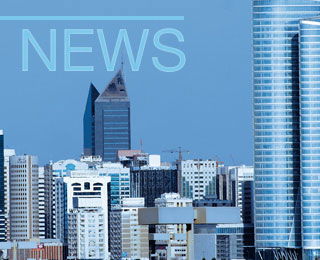LafargeHolcim's results for the first quarter of 2016 have disappointed analysts as the company announced that EBITDA had fallen by 17 per cent on like-for-like terms compared to the same period in 2015.
Despite volume sales of cement, aggregates and ready-mix all rising modestly, LafargeHolcim’s revenues were up just 0.1 per cent like-for-like. The firm cited "challenging" conditions in Nigeria, Brazil and India as the reason for slow growth.
The market reacted negatively to the announcement. CM-CIC Market Solutions said that although the results had to be viewed in the light of trading conditions investors "should react badly". Bernstein said the results "further highlighted the disconnect between the attractive cash flow story painted by management and performance of the underlying business and has done nothing to convince us that the 2018 targets... can be met."
Those targets commit the company to achieving an operating EBITDA of at least CHF8bn by 2018 (US$8.24bn at today's exchange rates). In 2015 the company's EBITDA was CHF5.75bn, meaning that revenues need to grow by 11.6 per cent per annum to meet the target.
LafargeHolcim also plans to make CHF3.5bn (US$3.7bn) in divestments in 2016. This includes the sale of 11Mta of capacity in India as part of the regulatory conditions for the merger. A prior attempt to sell some of the company’s Indian assets was blocked because legislation meant that the buyer could not take over mineral rights from the seller, a situation which has since been rectified.
In addition to divesting of its Indian assets, LafargeHolcim is said to be considering the sale of its operations in Australia and New Zealand, valued at US$3bn. The firm is also said to be considering pulling out of Vietnam given the overcapacity in the country.
While this may suggest LafargeHolcim is running down its operations in the Asia Pacific region, the area remains core to the company's business. Asia Pacific accounted for over half the firm's cement sales in 1Q16 (30.1Mt of a total of 56.6) and performance in Indonesia and Philippines was specifically cited as having had a positive impact on the figures. LafargeHolcim's operations in China were also recognised by Bernstein, which warned investors against underestimating the company's exposure to the country.
A further 2018 target is the retention of an investment-grade rating. However, in April Moody's downgraded the outlook for LafargeHolcim from "stable" to "negative", citing falling EBITDA and the achievability of the divestment programme as the reason. LafargeHolcim's current Baa2 rating is two steps above Moody's non-investment grade category.
Since the merger of Lafarge and Holcim in July 2015 the new entity's share price has fallen from a peak of around CHF70 per share to a low of CHF33.29 in February 2016. Having recovered to CHF50 in April, shares have fallen by 11 per cent over the past month to stand at CHF42.14 at close of business yesterday.
